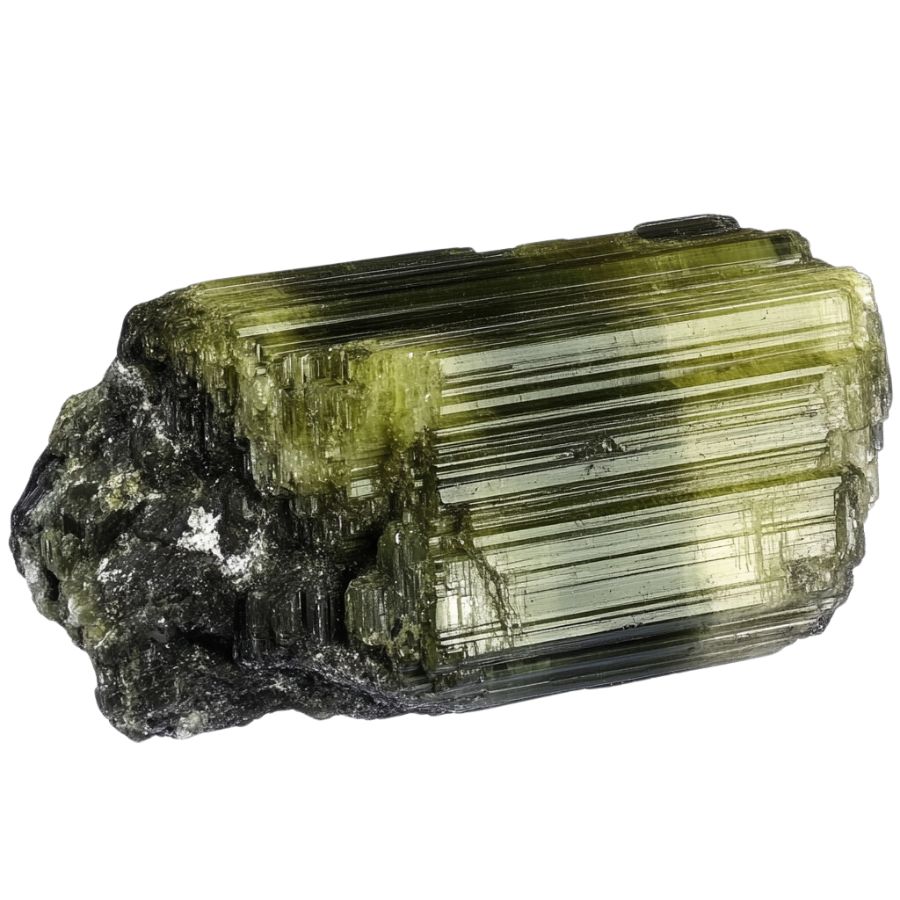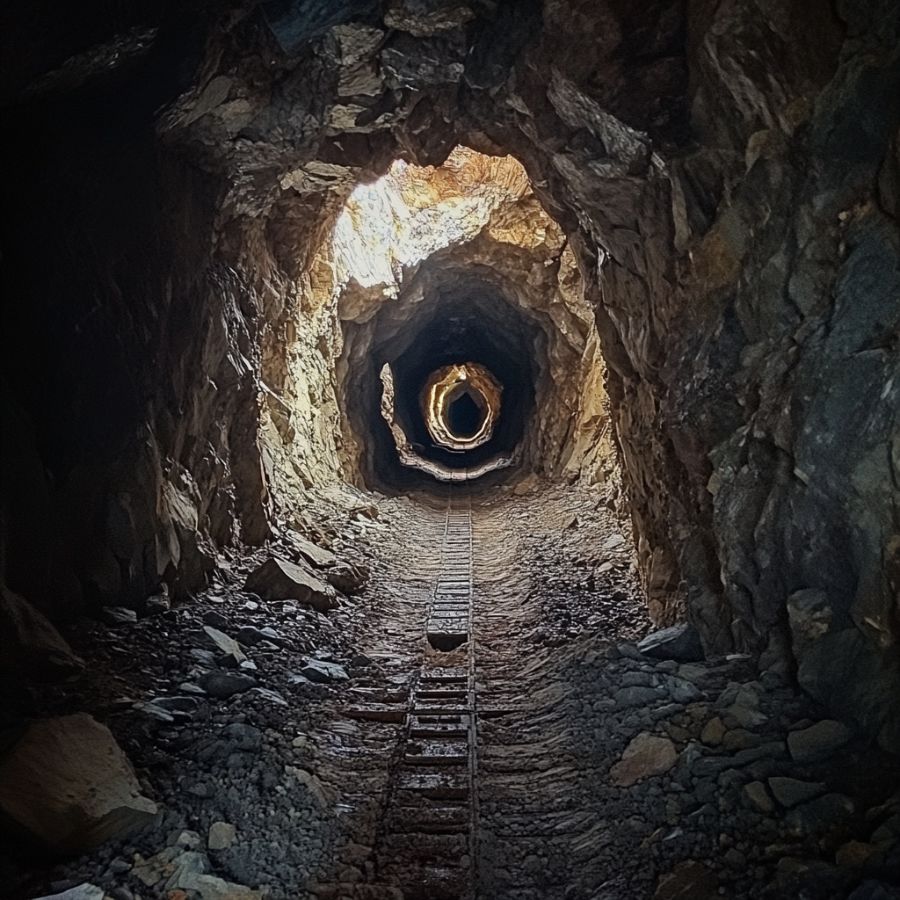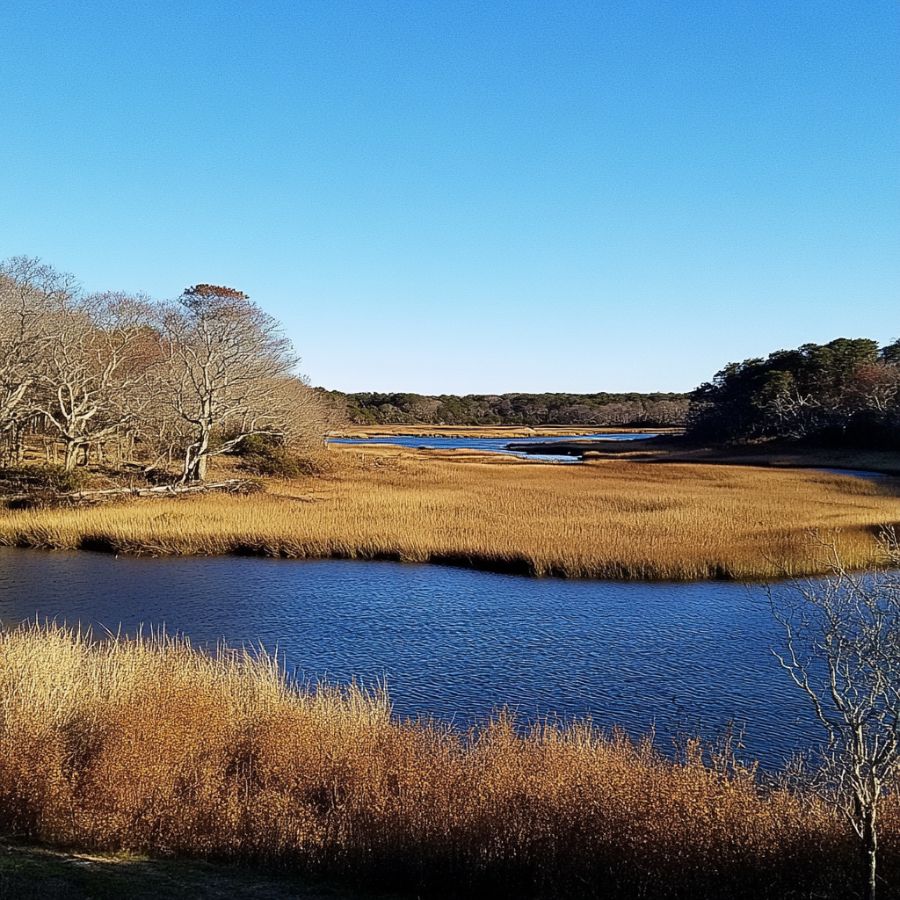From the Atlantic Ocean to New Hampshire, Vermont to Connecticut, and Rhode Island to New York, Massachusetts is a treasure trove for rock enthusiasts.
But searching for tourmaline in Massachusetts without knowing where to look results in fruitless searches and wasted weekends. We understand your frustration. That’s why we’ve done the hard work for you.
Today, we’ll reveal the best spots to find tourmaline in the Bay State. Our carefully researched locations will save you time and energy, ensuring you’re looking in the right places.
Get ready to discover Massachusetts’ hidden gems and make your tourmaline hunting dreams a reality.
How Tourmaline Forms Here

Tourmaline forms deep underground through intense heat and pressure. It originates from hot, mineral-rich fluids that move through fractures in rocks like granite and pegmatite. As these fluids cool, the minerals within them start to crystallize, forming tourmaline.
The color of tourmaline depends on the specific minerals involved, leading to a wide range of hues including pink, red, green, and blue.
Over millions of years, these crystals grow and become the beautiful, multifaceted stones we see today. Tourmaline is prized for its variety of colors and is often used in jewelry and decorative items.
The Types Of Tourmaline
Several incredible types of Tourmaline can be found in the US as well as in our state. Each is uniquely beautiful and interesting including:
Elbaite

Elbaite is found in pink, red, green, blue, yellow, and even colorless forms. What makes elbaite special is its ability to show multiple colors in a single crystal, like the famous “watermelon” tourmaline with pink and green hues.
This gem stands out due to its complex chemical makeup, which includes lithium, sodium, and aluminum. This composition gives Elbaite its diverse color range and dichroism, allowing it to display different colors when viewed from different angles.
Elbaite has a unique place in history as the first tourmaline variety in which lithium was discovered back in 1818. Some rare types, like the neon blue Paraiba elbaite, are highly sought after by collectors and jewelers.
Schorl

Schorl is known for its deep, rich color. It typically forms long, prismatic crystals with a shiny, glass-like surface when polished. Unlike other tourmalines, schorl gets its distinctive black color from high iron concentrations.
One of Schorl’s most fascinating features is its ability to become electrically charged through heating or rubbing. When charged, it can attract or repel small particles.
This unique electrical property makes Schorl valuable in various industries. It’s used in electronics and manufacturing to control static electricity and electromagnetic interference.
Despite being less colorful than other tourmalines, schorl’s practical applications make it an important and interesting variety.
Rubellite

Rubellite stands out with its vibrant pink to red colors. The most prized ones show a pure, saturated red without any brown or orange hints. This beautiful color comes from manganese in its makeup.
One cool thing about rubellite is its double refraction. It can look like it has two different colors when you view it from different angles.
Dravite

Dravite, or Brown Tourmaline, comes in shades from dark brown to light brown-yellow. It can look a bit like Smoky Quartz, with a semi-see-through quality.
Its crystals are often needle-like or prismatic, with points at both ends. This sets it apart from other tourmalines like the darker schorl or the colorful elbaite.
What makes dravite special is its rich sodium and magnesium content. This sets it apart from other tourmalines. It was first discovered in 1883 and named after the Drava River in Slovenia.
Indicolite

Indicolite is a rare and captivating blue to blue-green stone. It’s prized for its pure, bright blue color, which is considered the rarest within the tourmaline family. The hues can range from light blue-green to deep, rich blue, often with high clarity.
What sets Indicolite apart is its unique optical effects. It shows pleochroism, appearing to change color when viewed from different angles. Some specimens also display chatoyancy, creating a “cat’s eye” effect when cut in a certain way.
Indicolite is sometimes called “Brazilian sapphire” due to its resemblance to the precious gem. However, they’re different minerals.
The increasing demand for blue tourmalines has made indicolite highly sought-after in the gemstone market, appreciated for its beauty and rarity.
Watermelon Tourmaline

Watermelon tourmaline is truly one-of-a-kind. It looks just like a slice of watermelon, with a pink or red center and a green outer layer. This unique look happens because different elements join the crystal at different times as it grows.
These crystals often form in a rounded triangle shape. They’re see-through to somewhat clear and have a glass-like shine. When cut into slices, they really do look like little watermelons!
Cat’s Eye Tourmaline

Cat’s eye tourmaline is known for its mesmerizing chatoyancy effect. This creates a bright band across the stone’s surface, resembling a cat’s eye.
This stone comes in various colors, from green to pink to brown, and is usually semi-translucent to opaque.
What makes this stone special is the perfect alignment of tiny, needle-like inclusions inside it. These scatter light in a unique way, creating that eye-catching effect. It’s quite different from other tourmalines that don’t have this feature.
Unlike other cat’s eye stones, Tourmaline offers a wider range of colors and is often more affordable.
Achroite

Achroite is a rare, colorless variety of tourmaline that looks like a drop of clear water turned to stone. It’s completely transparent, making it unique among tourmalines which usually have color. The name comes from Greek, meaning “without color.”
What’s special about achroite is that it doesn’t change color when viewed from different angles. It means the stone can be cut in many ways without losing its clarity.
Verdelite

Verdelite is known for its beautiful green color. It can range from light green to deep emerald.
One thing that makes verdelite special is that you can find big, clear crystals of it. This isn’t always easy with other gemstones.
People love using verdelite in jewelry because its rich color and interesting light effects make it a popular choice for all kinds of accessories. Each piece of verdelite is like a little piece of nature you can wear.
Paraíba Tourmaline

Paraíba Tourmaline is a rare gemstone that catches the eye with its vibrant neon blue or green color. It’s like no other tourmaline you’ve seen before. The intense glow comes from copper in the stone, making it stand out from its cousins.
This stone is one of the rarest. For every 10,000 diamonds mined, only one Paraíba tourmaline is found.
It was only discovered in the late 1980s, making it a newcomer in the gem world. But Paraíba tourmaline’s unique color and rarity quickly made it a favorite among gem lovers.
Its discovery caused quite a stir in the gem community. Even small stones can be valuable because of how rare and beautiful they are.
What Rough Tourmaline Looks Like
When you’re out looking for rough Tourmaline on your own it’s important to know what you’re looking for. But before we dive into specifically what to look for you need to make sure you understand the type of rocks and minerals you’re seeing.
DON'T MISS OUT ON ANY GREAT FINDS!
While you're out searching for Tourmaline you're going to find A LOT of other interesting rocks and minerals along the way. The last thing you want to do is toss out something really interesting or valuable. It can be easy to misidentify things without a little guidance.
We've put together a fantastic field guide that makes identifying 140 of the most interesting and valuable rocks and minerals you will find REALLY EASY. It's simple to use, really durable, and will allow you to identify just about any rock and mineral you come across. Make sure you bring it along on your hunt!
Now, back to the identification specifics:
Here are some tips to help you recognize rough tourmaline.
Look for Color Variations

Tourmaline comes in many colors, like pink, green, blue, and even black. Some pieces have multiple colors, like watermelon tourmaline, which is pink and green.
If you see these color mixes, it’s likely tourmaline. Keep an eye out for vibrant shades.
Assess the Density and Weight

Rough tourmaline is relatively heavy for its size. If you pick up a piece and it feels denser than expected, it could be tourmaline. This weight can help you confirm your find.
Examine the Crystal Structure

Tourmaline features distinctive crystal shapes, ranging from slender and elongated to chunky forms. Look for triangular cross-sections and striations on the surface, which indicate its unique growth patterns.
Check for Transparency

Some rough tourmaline can be slightly transparent. If you hold it up to the light, you might see through it a bit. This transparency can be a good sign that you have tourmaline.
A Quick Request About Collecting
Always Confirm Access and Collection Rules!
Before heading out to any of the locations on our list you need to confirm access requirements and collection rules for both public and private locations directly with the location. We haven’t personally verified every location and the access requirements and collection rules often change without notice.
Many of the locations we mention will not allow collecting but are still great places for those who love to find beautiful rocks and minerals in the wild without keeping them. We also can’t guarantee you will find anything in these locations since they are constantly changing.
Always get updated information directly from the source ahead of time to ensure responsible rockhounding. If you want even more current options it’s always a good idea to contact local rock and mineral clubs and groups
Tips on where to look
Once you get to the places we have listed below there are some things you should keep in mind when you’re searching:
Look for Sedimentary Rocks

Sedimentary rocks are great places to find tourmaline. These rocks form from layers of sand, mud, and minerals. Over time, minerals like tourmaline can get trapped.
Look in riverbeds or areas where sediment has built up. You might find small pieces or even larger crystals.
Explore Mines

Mines are great spots to find tourmaline. Many mines across the U.S. extract various gemstones, including tourmaline.
Some mines even allow visitors to search for gems themselves. Always check if they have guided tours or special digging days.
Search in Gravel Pits

Gravel pits are often overlooked, but they can be treasure troves. These pits dig deep into the earth, exposing layers of rock.
Tourmaline can be found in the gravel. Just sift through the material carefully.
The types of Tourmaline can you find around the state
In Massachusetts, two notable types of tourmaline are commonly found: Watermelon Tourmaline and Black Tourmaline.
Watermelon Tourmaline is a striking variety characterized by its unique color zoning, featuring a pink or red center surrounded by a green outer layer, resembling the appearance of a watermelon.
Black Tourmaline, also known as Schorl, is the most prevalent type and is recognized for its opaque black color, sometimes exhibiting hints of blue or green.
Both varieties are sought after for their beauty and unique properties, making them popular among collectors and gem enthusiasts.
Some Great Places To Start
Here are some of the top locations in Massachusetts to begin your search for tourmaline. These spots are known for their potential to yield this beautiful gemstone.
Always Confirm Access and Collection Rules!
Before heading out to any of the locations on our list you need to confirm access requirements and collection rules for both public and private locations directly with the location. We haven’t personally verified every location and the access requirements and collection rules often change without notice.
Many of the locations we mention will not allow collecting but are still great places for those who love to find beautiful rocks and minerals in the wild without keeping them. We also can’t guarantee you will find anything in these locations since they are constantly changing.
Always get updated information directly from the source ahead of time to ensure responsible rockhounding. If you want even more current options it’s always a good idea to contact local rock and mineral clubs and groups
Miller Hill Quarry

Miller Hill Quarry is a former crushed stone quarry that sits atop Miller Hill, reaching about 407 feet in elevation. It’s a geological treasure trove, mainly composed of quartz diorite with pockets of quartzite and granite.
The quarry’s unique makeup doesn’t stop at tourmaline. Enthusiasts can also stumble upon albite, calcite, fluorite, hematite, magnetite, and quartz.
These rock types create a unique geological environment that is conducive to the formation of various minerals, including tourmaline.
Tourmaline can typically be found embedded within the quartz diorite and granite formations. Rockhounds often search for pockets or veins within these rocks where tourmaline crystals may be present.
Miller Hill Quarry’s diverse mineral content makes it a favorite among collectors. Its location in southern Middlesex County provides easy access for locals and visitors alike.
Long Hill

Long Hill is an 853-foot peak that is part of a mineral-rich belt stretching 2.5 miles long and 1000 feet wide.
What makes Long Hill special for tourmaline hunters is its spodumene-bearing pegmatites. These coarse-grained igneous rocks often hide rare minerals and gemstones.
The hill’s surface exposures make it easier for gem enthusiasts to spot and extract tourmaline. As you climb, keep an eye out for the distinctive prismatic crystals. They come in various colors, from black to pink to green.
The area’s diverse mineral wealth extends beyond tourmaline. The pegmatites here have yielded other fascinating finds, including beryl and various rare earth elements.
Bolton Lime Quarries

The Bolton Lime Quarries are two historic limestone quarries on Rattlesnake Hil. The quarries’ limestone, prized for its purity, harbors an array of fascinating minerals, including tourmaline.
What makes these quarries special are the scapolite dikes left intact during excavation due to their hardness. These unusual formations create a captivating geological landscape.
The site’s rich mineral diversity stems from its complex formation history, involving multiple stages of pegmatite invasion and mineral reactions.
For tourmaline hunters, the dumps between the Whitcomb and Hildreth quarries are prime spots. Here, discarded rock fragments often contain hidden gems.
The area also boasts other intriguing minerals like boltonite, once thought to be a new species.
Lily Pond

Nestled in the scenic town of Goshen, Lily Pond is a hidden gem for rockhounds seeking tourmaline. This small body of water is surrounded by geological wonders that make it a prime spot for mineral enthusiasts.
Just north of the pond, you’ll find rich pegmatite veins that hold the promise of colorful tourmaline specimens.
The area’s claim to fame is its connection to goshenite, a clear variety of beryl named after the town. But it’s the diverse mineral wealth that draws rockhounds.
As you explore the outcrops near Lily Pond, keep an eye out for the telltale prismatic crystals of tourmaline, often found in shades of green, pink, or black.
The pegmatites here are a testament to the region’s fascinating geological history. These mineral-rich formations were created by ancient magmatic processes, leaving behind a treasure trove for today’s collectors.
Remember to bring proper tools and a keen eye to make the most of your tourmaline hunting adventure at Lily Pond.
Blueberry Mountain Quarry

Blueberry Mountain Quarry is a rockhound’s paradise located right on the Woburn-Winchester line. This former stone quarry boasts a rich geological tapestry that’s perfect for tourmaline hunting.
The site’s diverse rock formations, including granodiorite, diorite, and granite, create an exciting backdrop for mineral enthusiasts.
What makes this quarry special are its pegmatite veins. These coarse-grained igneous rocks are known hotspots for tourmaline formation. As you explore, keep an eye out for these veins – they’re your best bet for finding tourmaline crystals.
The quarry’s history adds to its charm. Once a bustling industrial site, it now serves as a peaceful haven for geology buffs. Its unique location offers not just great rockhounding opportunities, but also beautiful views of the surrounding area.
Places Tourmaline has been found by county
After discussing our top picks, we wanted to discuss the other places on our list. Below is a list of the additional locations where we have succeeded, along with a breakdown of each place by county.
| County | Location |
| Berkshire | Lee Area |
| Berkshire | Tyringham Area |
| Bristol | Hebronville Area |
| Hampden | Blandford mica mines |
| Hampden | Westfield Area |
| Hampshire | Clark Ledge pegmatite locality |
| Hampshire | Macomber Ledge pegmatite locality |
| Hampshire | Barrus farm pegmatite localities |
| Hampshire | Walnut Hill Pegmite prospects |
| Hampshire | Pelham asbestos mine |
| Middlesex | Carlisle Area |
| Worcester | Quabbin Aqueduct Shaft #2 locality |
| Worcester | Sterling Area |
| Worcester | Rocky Hill spodumene locality |


